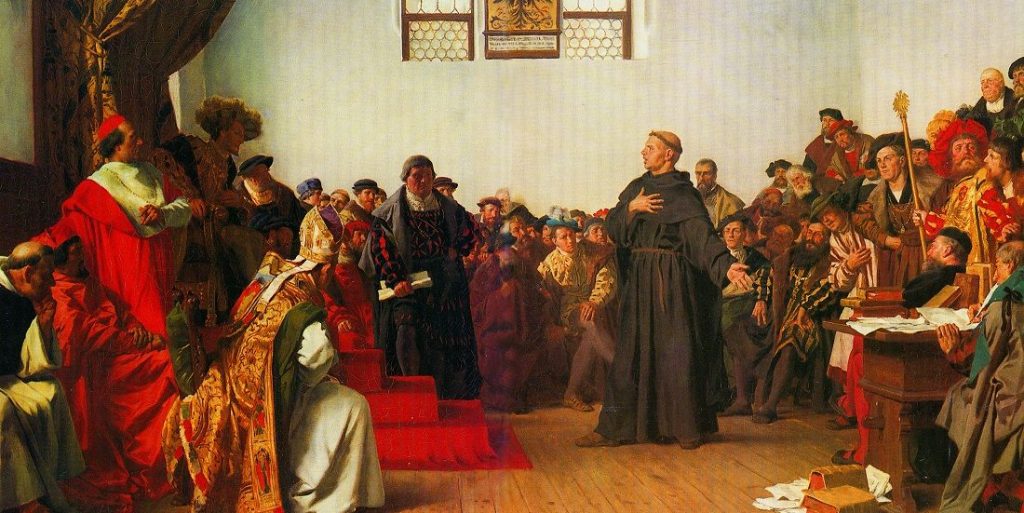In the murky depths of the Middle Ages, the Catholic Church was the ultimate power in Europe. It controlled both the spiritual and political lives of millions, collecting wealth and exerting influence far beyond the pulpit. However, by the 16th century, cracks began to form in this mighty institution, leading to one of the most significant revolutions in European history: the Protestant Reformation. At the heart of this upheaval was a German monk with a hammer, a list, and an unshakable belief that salvation shouldn’t come with a price tag—Martin Luther.

The Spark That Set Europe Ablaze
In 1517, Pope Leo X needed funds to build St. Peter’s Basilica, and what better way to raise money than selling “get-out-of-purgatory” cards? These indulgences promised sinners a fast track to heaven—for the right price. Johann Tetzel, a particularly enthusiastic salesman, went around German towns proclaiming: “As soon as the coin in the coffer rings, the soul from purgatory springs!”
This blatant commercialization of salvation outraged Martin Luther. In response, he wrote his Ninety-Five Theses, a fiery critique of Church corruption, and nailed it to the door of Wittenberg Castle Church. Although it was meant as an academic debate, the document spread like wildfire, thanks to the recent invention of the printing press. Before long, Luther found himself at the center of a religious and political storm.
A Monk Becomes a Revolutionary
Initially, Luther had no intention of breaking away from the Church, but when Pope Leo X demanded he recant, Luther doubled down. He publicly burned the papal decree excommunicating him, effectively declaring independence from Rome.
Luther’s ideas went far beyond indulgences. He argued that:
- People should read the Bible themselves instead of relying on priests.
- Salvation came through faith alone, not Church rituals.
- The Church should not control worldly affairs, and secular rulers had the right to govern religious matters in their own lands.
This was not just a religious dispute—it was a direct challenge to the Catholic Church’s political power. In Germany, local princes saw an opportunity to break free from Rome’s grip, while common people, particularly peasants, saw Luther’s defiance as a call to rise against feudal oppression.
Religious Rebellion and Bloody Consequences
By 1524, inspired by the Reformation’s message of freedom, German peasants revolted against their feudal lords in what became known as the German Peasants’ War. However, Luther, fearing chaos, sided with the princes, and the rebellion was brutally crushed. Despite this, his movement continued to spread. By 1555, the Peace of Augsburg was signed, allowing German princes to choose the religion of their own territories—effectively ending the Church’s absolute dominance in the region.
Meanwhile, across Europe, new reformers emerged. John Calvin, in Geneva, pushed Luther’s ideas further, introducing the controversial doctrine of predestination—the belief that God had already chosen who would be saved and who was doomed. His ideas spread to France, leading to decades of bloody religious wars between Catholics and Protestants (the Huguenots). England, too, had its own reformation, led by King Henry VIII, who famously broke from Rome—not for theological reasons, but because he wanted a divorce.
The Lasting Impact of the Reformation
The Protestant Reformation was not just about religion. It reshaped Europe’s political landscape, weakened the Catholic Church’s stranglehold, and paved the way for greater individual freedoms. It also fueled the rise of nation-states, encouraged literacy (since people were now reading the Bible themselves), and set the stage for later democratic movements.
Even today, the echoes of the Reformation are felt in debates over religious freedom, the separation of church and state, and the power of institutions over individuals. What started as a monk’s protest against indulgences ended up transforming the Western world forever.

No comments yet.